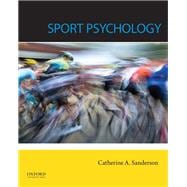FEATURES
*Emphasis on real-world examples and contemporary athletes in every chapter
*Connects to students on a personal level through "Test Yourself" features that enable students to rate themselves on various issues, attitudes, and behaviors and apply what they've learned to their own lives
*Emphasizes research with a thorough review of research methods in the first chapter and "Research in Action" boxes throughout that explore thought-provoking topics like the impact of superstition on athletic performance
*Integrates cutting-edge material in "Focus on Neuroscience" boxes that describe recent studies showing how the brain and hormones may impact athletic performance
*Focuses on youth in "Impact on Youth" boxes that demonstrate how theories and principles of sport psychology can be used with young athletes
*Addresses diversity issues in the opening chapter and in a unique chapter that considers how stereotypes, prejudice, and discrimination regarding gender, race/ethnicity, and sexual orientation influence sport participation and performance








